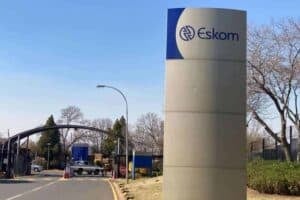Diversifying the power utility's energy mix could buy vital time to maintain and restore problematic power plants, and ease Eskom's tight power grid.

Diversifying Eskom’s energy mix, a suggestion echoed for years by numerous Independent Power Producers (IPPs) and the power utility’s CEO, André de Ruyter, could finally become a viable option for South Africa in the long-term.
Endorsing mining companies to generate their own electricity was among the issues discussed at an ANC lekgotla in January. It was reportedly said that this would be a positive step that would not only ease Eskom’s over-saturated power grid, but could also provide employment opportunities and economic growth, according to ITWeb.
Mineral resources and energy minister Gwede Mantashe recently announced that regulatory changes could be expected soon, among them being that IPPs can generate their own electricity.
But the idea of moving away from coal and making use of IPPs is not new.
Sunday Times reports that when de Ruyter was initially interviewed to be the power utility’s new CEO three years ago, he had already suggested that alternative energy generation by IPPs would help the embattled SOE, and make electricity more affordable in the long term.
It was also reported that de Ruyter was not aware that Mantashe would announce his endorsement of IPP power generation, but that this would be a positive move towards creating a more reliable electricity generation plan.
Bloomberg reported that private energy producers could also allow Eskom to carry out essential maintenance on failing coal units, to minimise the risk of load shedding.
The latest discussion to reduce Eskom’s soaring debt was held at a National Economic Development and Labour Council (Nedlac) meeting this week, Moneyweb reported.
Cosatu boldly proposed that using its pension money could ease Eskom debt by up to 60%, a suggestion that has been accepted “in principle”, said Cosatu parliamentary officer Matthew Parks.
“What we wanted is people in agreement on the intervention package, from the debt relief to the specific conditions attached to it, and that it’s a social compact between government, labour and community.
“[We also] want to see it being presented by the president in the Sona next week as a centrepiece to say: Eskom is the biggest threat to the state of the economy and society and we are intervening,” Parks said.
This contribution would not be a free-for-all, however, with the trade union laying out strict terms and conditions, among others a guarantee that Eskom workers would not lose their jobs, that those guilty of looting Eskom be arrested, and that coal suppliers and IPPs reduce their rates to market-related prices, or have their contracts cancelled.
Diversifying South Africa’s energy mix would also see the country finally committing to the Paris Agreement’s terms to move away from relying on coal for electricity.
According to Carbon Brief, South Africa ranks 14th in the world in terms of emitting toxic greenhouse gases, mostly due to its dependence on coal.
As part of the global climate change coalition, South Africa has reportedly pledged to have its emissions peak between 2020 and 2025, after which it would see a dip in coal-produced electricity, no new coal-fired power plants built after 2030, and only relying on coal four one-fifth of electricity generated.
(Compiled by Nica Schreuder. Background reporting by Moneyweb’s Tebogo Tshwane.)
For more news your way, download The Citizen’s app for iOS and Android.






